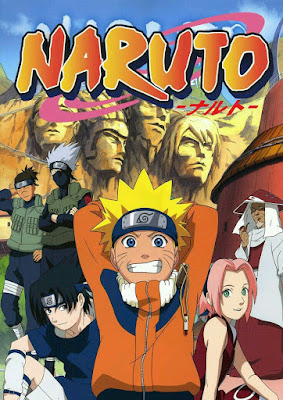Initial ideas: Research
After some consideration I reduced my first ideas to two: Anime and Japanese Mythology. I really liked both of these concepts and for this reason I will do some research in order to be able to choose one for my project which theme is "Oriental Surprise". Even if I do not do one of them now, I hope to make it in the future.
Anime
In Japanese the word "anime" means "animation" (all kinds of animation), but nowadays this word is used for the rest of the world for the animation made in Japan. The first anime ever made was created in 1906 and it was called "Katsudō Shashin". However, many consider the commercial anime"Dekobō Shingachō: Meian no Shippai" made in 1917 the first anime.
Anime is considered not only a source of entertainment but also of art. In addittion to different styles there are also 5 different types: Joesei, Kodomuke, Shonen, Shojo and Seinen. Each type is centered on a specific target audience. For instance, the category shónen's target are boys between the age of 8 to 18 and it is normally an anime of action with a male protagonist (this category includes animes such as Naruto, Attack on Titan, My Hero Academia, Death Note, One Piece and so on).
Nowadays there are a lot of different animes but all of them include common characteristics such as the exaggeration of certain physical features (normally the eyes are oversized and the head is almond-shaped), the use of colour shading (cel shading), the limited animation (a technique of animation that uses pieces from each scene that are the same in the next scene) and the complex plots.
It is impossible to talk about anime without mentioning manga. These two are most of the times connected since most of the famous animes began as mangas.
If I choose this concept for my project I am thinking about developing 5 characters in which one of them I present it in 3D or I could make a single character in 3D and make 4 landscapes paintings based in Anime's Worlds.
Japanese Mythology and Folklore
Most of the information about Japanese mythology, traditions and history we have was recorded in the Koijiki, or Furukotofumi (古事記, “Records of Ancient Matters”), and in the Nihon shoki (日本書紀, “Chronicles of Japan”). Both of these are based in the Yamato Cycle (centered around Amaterasu Ōmikami,) and the Yzumo Cycle (Susanoo (or Susanowo) no Mikoto.
In Japanese Mythology, gods, goddesses and deities are called Kami (神). It is said that there are eight million Kami, but this number is normally used to express infinity in Japan. Therefore, we might conclude that there are an infinity of Kamis. It is important to understand that this is a result of a diversity of religions such as Buddhism, Hinduism and Shinto ( one of the majors religions in Japan), but it was also influenced by Greek, Roman, Indian and Chinese gods and goddesses.
As I mentioned before there are many different Kamis, so I selected some that I found more interesting and that have an important role in the Japanese Culture. The first two were Izanami and Izagani (central gods of the Creation Myth of the Shinto religion), then Amaterasu (sun goddess), Tsukiyomi (moon goddess), Rajin and Fūjin (gods of the weather) and last but not least Kagutsuchi (god of fire).
If I choose this concept for my project, I am thinking about painting 4 illustrations of these kami according to the traditional Japanese illustrations or maybe making it digitally. For the 3D artwork, I would develop one of these in clay or a 3D digital artwork
References:
Kuiper K. (2007) Japanese Mythology [online] Britannica Academic, Available from: https://academic-eb-com.proxy.library.dmu.ac.uk/levels/collegiate/article/Japanese-mythology/436238 [Accessed 10.04.2021]
Mandal D. (2020)
12 Major Japanese Gods and Goddesses You Should Know About [online] Realm of History, Available from: https://www.realmofhistory.com/2020/05/06/major-japanese-gods-goddesses/ [Accessed 10.04.2021]
Keene D. and Matsumoto N. (2006) Nihon Shoki [online] Japanese Historical Text Initiative, Available from: https://jhti.berkeley.edu/Nihon%20shoki.html [Accessed 10.04.2021]
Spacey J. (2015) Meet the Gods: 13 Japanese Kami [online] Japan Talk, Available from:https://www.japan-talk.com/jt/new/kami [Accessed 10.04.2021]
Wheeler J. (2020) Everything You Need To Know About Japanese Mythology [online] Guidable, Available from: https://guidable.co/culture/everything-you-need-to-know-about-japanese-mythology/ [Accessed 10.04.2021]
Horner C. (2020) What is the History of Anime in Japan?[online] Japan Junky, Available from:https://japanjunky.com/what-is-the-history-of-anime-in-japan/ [Accessed 10.04.2021]
Yegulalp S. (2019) Brief History of Anime [online] liveaboutdotcom, Available from: https://www.liveabout.com/brief-history-of-anime-144979 [Accessed 10.04.2021]
Ekman J. (n.d.) Types of Animes - The Complete Guide [online] Okuha, Available from:https://okuha.com/types-of-anime/ [Accessed 10.04.2021]
Young M. (2014) Major Elements/Characteristics [online] Anime, Available from: https://anime-manga1.weebly.com/major-elements-characteristics.html [Accessed 10.04.2021]



Comments
Post a Comment